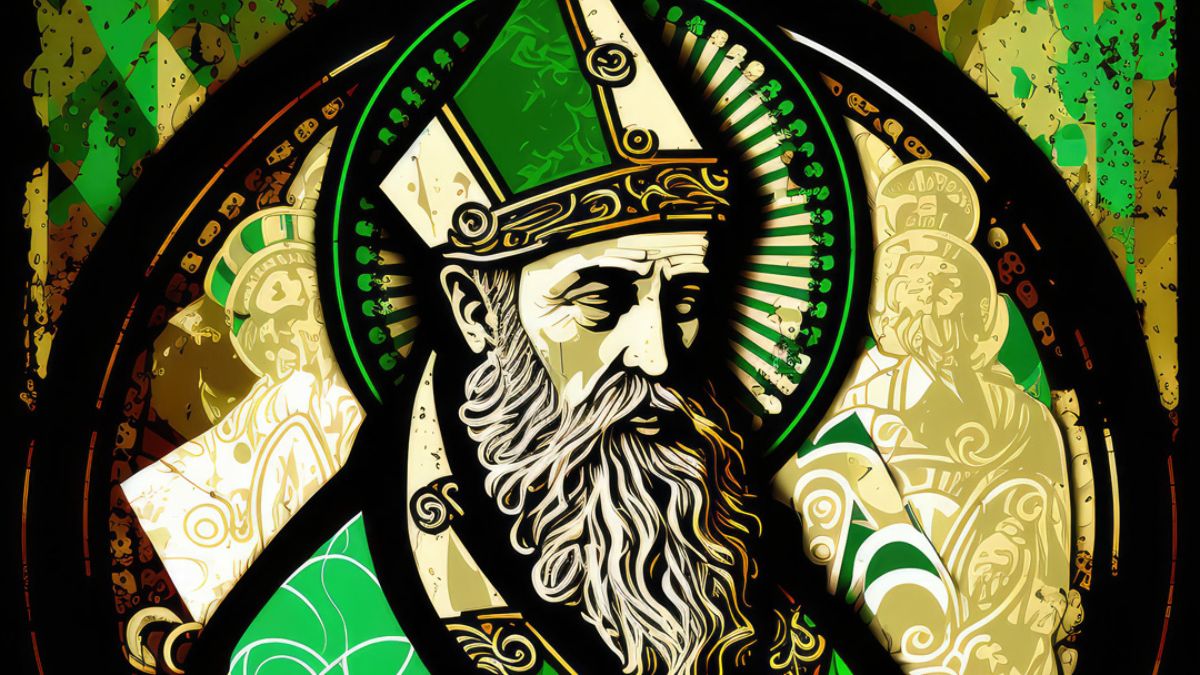

The Story of St. Patrick
Of the thousands of green revelers, few know about the slave and evangelist for whom St. Patrick’s Day is named.
03/15/24
John Stonestreet and Chuck Colson

Of the thousands of green-clad parade-goers, marchers, and partiers on his day, few know about Patrick, the man for whom the holiday is named. Fewer still know of the man beyond the legend, who supposedly drove the snakes out of Ireland and certainly possessed an indomitable faith in Jesus Christ.
In 2006, Chuck Colson told St. Patrick’s story in a Breakpoint commentary. Here is Chuck Colson:
Patrick was born in Roman Britain to a middle-class family in about 390 A.D. When Patrick was a teenager, marauding Irish raiders attacked his home. Patrick was captured, taken to Ireland, and sold to an Irish king, who put him to work as a shepherd.
In his excellent book How the Irish Saved Civilization, Thomas Cahill describes the life Patrick lived. Cahill writes, “The work of such slave-shepherds was bitterly isolated, months at a time spent alone in the hills.”
Patrick had been raised in a Christian home, but he didn’t really believe in God. But now—hungry, lonely, frightened, and bitterly cold—Patrick began seeking out a relationship with his heavenly Father. As he wrote in his Confessions, “I would pray constantly during the daylight hours” and “the love of God … surrounded me more and more.”
Six years after his capture, God spoke to Patrick in a dream, saying, “Your hungers are rewarded. You are going home. Look—your ship is ready.”
What a startling command! If he obeyed, Patrick would become a fugitive slave, constantly in danger of capture and punishment. But he did obey—and God protected him. The young slave walked nearly 200 miles to the Irish coast. There he boarded a waiting ship and traveled back to Britain and his family.
But, as you might expect, Patrick was a different person now, and the restless young man could not settle back into his old life. Eventually, Patrick recognized that God was calling him to enter a monastery. In time, he was ordained as a priest, then as a bishop.
Finally—30 years after God had led Patrick away from Ireland—He called him back to the Emerald Isle as a missionary.
The Irish of the 5th century were a pagan, violent, and barbaric people. Human sacrifice was commonplace. Patrick understood the danger and wrote, “I am ready to be murdered, betrayed, enslaved—whatever may come my way.”
Cahill notes that Patrick’s love for the Irish “shines through his writings. … He [worried] constantly for his people, not just for their spiritual, but for their physical welfare.”
Through Patrick, God converted thousands. Cahill writes, “Only this former slave had the right instincts to impart to the Irish a New Story, one that made sense of all their old stories and brought them a peace they had never known before.” Because of Patrick, a warrior people “lay down the swords of battle, flung away the knives of sacrifice, and cast away the chains of slavery.”
As it is with many Christian holidays, St. Patrick’s Day has lost much of its original meaning. Instead of settling for parades, cardboard leprechauns, and “the wearing of the green,” we ought to recover our Christian heritage, celebrate the great evangelist, and teach our kids about this Christian hero.
That was Chuck Colson, from 2006, telling about St. Patrick. To learn more about this man of faith and his consequential life, check out this Breakpoint interview between Shane Morris and T.M. Moore, a former colleague of Chuck’s and the author of Celtic Flame: The Burden of St. Patrick.
For more resources to live like a Christian in this cultural moment, go to breakpoint.org.
This Breakpoint was originally published on March 17, 2023.















